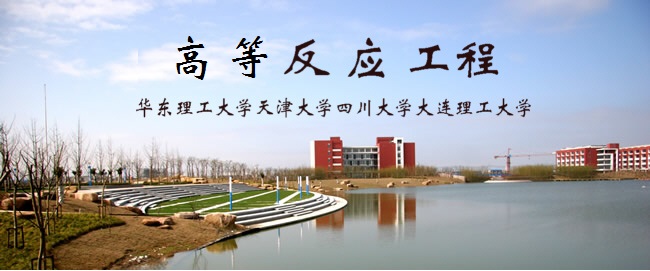
当前课程知识点:英语电影与文化 > Part I Form and Narrative Unit 1 Film Form I. > 1.7 Case study > Video
Hello and welcome to Section 7 of Unit 1.
大家好,欢迎来到第一单元第七节
This is also the last section which will be
这也是最后一节
bringing everything we’ve learnt about
我们将把本单元所学到的关于场面调度的知识
mise-en-scène together into a case study.
纳入到一个案例研究中
To begin with, let me refresh your memory about mise-en-scène.
首先,让我刷新一下你对场面调度的记忆
It is everything we see onscreen, from setting to costume
它是我们在屏幕上看到的一切,从布景到服装
from lighting to actor performance.
从灯光到演员表演
This, however, leads us to another question.
然而,这又引出了另一个问题
With so many elements in front of us, what do our eyes pick up
有这么多的元素在我们面前,我们的眼睛会注意点什么
and how do we interpret meaning?
我们如何解释意义
In terms of formalism
从形式主义角度来分析电影
the general principles for interpretation
其一般原则是
are unity and disunity, similarity and difference.
统一和不统一、相似与不同
In other words
换句话说
formal elements are arranged in a way to affect our attention
形式元素的组合就是以这样的方式来影响我们的注意力
to pull our eye to a portion of the frame
将我们的双眼拉到景框的某部分中去
at a given moment.
在特定的时间
Bear in mind:
记住
looking is purposeful, as Bordwell and Thompson have put it.
正如波德维尔和汤普森所说的那样,“看”是有目的的
This means that: what we look at is guided by our assumptions
这就意味着:我们所看的是以我们对“要看什么”的假设
and expectations about what to look for.
和期望为指导的
In the rest of this section, we will analyze a
在本讲的接下来部分,我们将分析
scene from the film Out of Africa.
电影《走出非洲》中的一个场景
In particular
特别是
we will look at what mise-en-scène elements were selected
影片选择了哪些场面调度元素
how they are arranged, and for what purpose.
它们是以何种目的、如何组合在一起的
In order to perform the analysis, the first step is to equip
为了进行分析,第一步是
yourself with background information about this film.
了解一些这部电影的背景知识
Out of Africa is based on the novel of the same name
影片《走出非洲》改编于
written by the Danish writer Karen Blixen.
丹麦作家凯伦·布利森撰写的同名小说
It is a semi-autobiography(半自传)
这是一部半自传小说
in which Karen recalls her life in Kenya in 1913.
凯伦在书中回忆了她1913年在肯尼亚的生活
Karen, an unmarried wealthy woman in Danmark
凯伦是丹麦的一名未婚且富有的女性
married one of her friends Baron Bror Blixen, for convenience.
为了方便,她嫁给了一个朋友,博罗·布里克森男爵
Karen could get her title and social status as Baroness
凯伦可以获得男爵夫人的头衔和社会地位
and could move out of Denmark
可以离开丹麦
whereas Bror could get the money Karen inherited.
而博罗则可以得到凯伦继承的钱
They moved to Kenya and established a coffee
他们搬到肯尼亚,建立了一个咖啡农场
farm which was run mostly by Karen.
主要由凯伦经营
It is also in Kenya where Karen met Denys
也正是在肯尼亚,凯伦遇到了丹尼斯
a British man who later became her lover.
后来成为她情人的英国男人
However, Denys died in a plane crash
然而,丹尼斯在一次飞机失事中丧生
leaving only the good memories for Karen to write about.
只留下了凯伦笔下的美好回忆
The scene we will analyze is the moment when
我们将分析的场景是
Karenarriving at Kenya
凯伦刚到达肯尼亚
met her soon-to-be husband Baron Blixen
见到即将成为她丈夫的男爵布利克斯
at a club where only men could enter.
在一家只有男人才能进入的俱乐部
This scene begins with a long shot of the outlook of the club.
这一幕以一个展现俱乐部全貌的远景镜头开始
We see a finely-built one-storey building.
我们看到一座精心建造的单层建筑
In the foreground we see a garden
在前景,有一个花园
with tables set up for a party or something.
摆放了为聚会或其他准备的桌子
Drinks are placed nicely on the table.
各种饮料很好地放在桌子上
The setting also suggests colonization, as inside the club
这一背景也暗示了白人在非洲的殖民,就像在俱乐部里一样
the African waiters are put into white robes
非洲服务员穿着白色的长袍
and the tables are covered with white clothes.
桌子上盖着白色的衣服
This forms a contrast against what the Kenyan streets actually look like.
这与肯尼亚的街道实际上的样子形成了对比
The second shot is taken indoors. Here, Karen
第二个镜头是在室内拍摄的。在这里
just off the train and still in her dirty dress
刚下火车的凯伦还穿着她的脏衣服
went inside of the club for her fiancé.
走进俱乐部找她的未婚夫
Her oily face and messy hair indicate long travel.
她泛着油光的脸庞和凌乱的头发向观众暗示了她的长途旅行
This is also shown by her performance
这也在她
as she tried to sort her hair and flatten her suit.
试图整理头发和平整西装的表演中体现出来
The next shot is taken from inside of the club.
下一个镜头是从俱乐部内部拍摄的
The setting is an indoor room
布景是一个室内房间
with all men either dressed in suit or uniforms.
里面所有的男人要么穿着西装,要么穿制服
This suggests formality but also masculinity.
这场景代表正式,也表示男性气质
Karen, as walking through the door
凯伦穿过门时
is placed at the background on the right.
就被放在右边的背景上
But nevertheless, our eye is cued to notice her
然而,我们的眼睛会注意到她
while treating the rest of the people as part of the background.
同时把其他人当作背景的一部分
This is because in narrative films
这是因为在叙事电影中
characters and their actions offer the strongest cues.
人物及其行为会为观众提供最强的线索
If a shot shows a crowd, we will tend to search
如果一个镜头显示了一群人,我们会倾向于通过寻找
the whole picture by looking for a character
一个角色来搜索
we recognize from earlier scenes.
我们从前面场景中识别出来的整个画面
As Karen walks in, the next shot
当凯伦走进来的时候,下一个镜头
instead of facing our main character Karen
摄影机没有对准我们的主角凯伦
is placed in front of a couple of men
而是转向几个男人前
who looked up from their newspaper
他们从报纸上抬起头
and stared towards the direction where Karen's
盯着凯伦
supposed to be walking in.
要走进去的方向
This change in action suggests that Karen’s appearance
这种行动上的变化表明
in the room stirred a bit of attention from the ordinary crowd.
凯伦在这个房间里的出现引起了这些人群的一些关注
It also forms our impression about Karen
这也形成了
as a woman who goes against convention.
我们对凯伦作为一个违反惯例的女人的印象
Karen then said to the men who looked up at her
凯伦就对那些抬起头看着她的男人们说
that she’s looking for Baron Blixen.
她在找布利森男爵
Instead of directly answering her question
那人并没有直接回答她的问题
the man asked for the servant.
而是叫了服务生
The servant, as we see in this shot, shows Karen out
如在这个镜头中所见,服务生把凯伦带出去
and keeps telling her this is a member-only club.
并不断告诉她这是一个只允许会员进入的俱乐部
Karen gets irritated and makes her complaint.
凯伦生气了,开始抱怨
When she walks out of the club, her fiancé Bror greets her.
当她走出俱乐部时,她的未婚夫伯罗过来跟她打招呼
Notice, he is wearing in white, with a black bowtie.
注意,他穿着白色西装,带着黑色的领结
He smiles, looking cheerful and happy.
他微笑着,看上去既开朗又快乐
As he moves closer to Karen
当他靠近凯伦时
his body size increases to the same portion as Karen's
银幕上他身体的大小增加到与凯伦相同的比例
as we see in this second shot.
像我们在第二个镜头中看到的那样
Also, we can see from their gestures
我们还可以从他们的姿势中看到
Bror leans slightly forward
博罗稍微向前倾斜
making Karen lean backward.
使凯伦身体向后倾斜
This performance, with the raising of his eyebrows
他眉毛上扬的表演
suggests his excitement and joy.
向观众展示着他的兴奋和喜悦
As we soon will know, he is about to marry Karen.
我们马上知道,他要跟凯伦结婚了
Karen was in shock. However, we cannot see her face.
凯伦很震惊。然而,我们看不到她的脸
In films, all other things being equal
在电影中,在其他各元素都平衡的状态
the viewer expects that more story information
观众会期待
will come from a character's face than from a character's back.
从一个角色的脸上,而不是一个角色的背上获得更多的故事信息
The viewer’s attention will thus usually pass over figures
因此,观众的注意力通常会从转身的角色跳过
which are turned away, and focus more on figures
更多地集中在
which are positioned frontally.
正面观众的人物上
Now in this shot Karen always has her back at us.
现在这个镜头里,凯伦总是背对观众
We are not given any shots directly showing her face.
我们没有得到任何直接显示她面部的镜头
This indicates a sense of passivity.
这体现了一种被动的感觉
The interpretation of this is that, in her own marriage
对此的解读是,凯伦在她自己的婚姻中
Karen seems to have no choice but being forced.
似乎别无选择,只能被迫服从
From the first minute she arrived in Kenya
从她到达肯尼亚的第一分钟起
everything happened to her unexpected and unplanned.
一切都在她意想不到的情况下计划好、发生了
Even her fiancé left her with a servant
她的未婚夫甚至把她丢给一个仆人
instead of picking her up himself.
而不是亲自去接她
Then, she was received in an unfriendly manner
然后,在俱乐部里接待她的是一群
by the European men in the club.
极不友好的欧洲男性
Now, she even wasn't given the choice to decide her own wedding.
现在,她甚至没有选择来决定自己的婚礼
This scene of Karen going all the way to Africa to meet up with her fiancé
凯伦一路去非洲和未婚夫见面的这一幕
suggests the general situation for women at that time.
暗示了当时女性的普遍情况
A woman, as we can see, has no right to choose or to decide.
如我们所见,女人无权选择或做决定
They are treated as subordinates to men.
她们被当做男人的附属来对待
A strong sense of injustice and inequality
一种强烈的不公正和不平等
was captured in this opening scene
可以在这个开场里被我们捕捉到
through all the mise-en- scène elements we have analyzed.
通过我们对所有这些场面调度元素的分析
This is the end of the section.
本讲到此结束
It also summarized the whole unit.
它也是整个单元的总结
In the next unit
在下一单元
we will begin to look at issues related to camera work.
我们将探讨摄影机的运动
Thank you for watching.
感谢观看
And see you next time.
下次再见
-1.1 Overview
--Video
-1.2 Mise-en-scène: setting
--Video
-1.3 Mise-en-scène: lighting
--Video
-1.4 Mise-en-scène: character appearance
--Video
-1.5 Mise-en-scène: performance
--Video
-1.6 Screen space and composition
--Video
-1.7 Case study
--Video
-Unit1 Questions for discussion
-Unit 1 单元测试
-2.1 Introduction of cinematography
--Video
-2.2 Cinematography: angle of framing
--Video
-2.3 Cinematography: camera distance
--Video
-2.4 Cinematography: mobile framing
--Video
-2.5 Case study
--Video
-Unit 2 Questions for discussion
-Unit 2 单元测试
-3.1 Overview
--Video
-3.2 Openings, closings, and story development
--Video
-3.3 Range of story information: restricted or unrestricted
--Video
-Unit 3 Questions for discussion
-Unit 3 单元测试
-4.1 Overview
--Video
-4.2 Editing and speed of narrative
--Video
-4.3 Chronology and continuity editing
--Video
-4.4 Flashbacks and editing
--Video
-Unit 4 Questions for Discussion
-Unit 4 单元测试
-5.1 Overview
--Video
-5.2 What is semiotics?
--Video
-5.3 Christian Metz
--Video
-5.4 Roland Barthes (Part 1)
--Video
-5.5 Roland Barthes (Part 2)
--Video
-5.6 Case study: 2001: A Space Odyssey
--Video
-Unit 5 Questions for Discussion
-Unit 5 单元测试
-6.1 Overview
--Video
-6.2 Origins of film ideology
--Video
-6.3 Media and technology
--Video
-6.4 Cultural hegemony and counterhegemony
--Video
-6.5 Case study: Star Trek
--Video
-Unit 6 Questions for discussion
-Unit 6 单元测试
-7.1 Overview
--Video
-7.2 Woman and film
--Video
-7.3 Feminist film theory and practice
--Video
-7.4 Case study: Three Billboards Outside Ebbing, Missouri
--Video
-7.5 Masculinity
--Video
-7.6 Queer Cinema
--Video
-Unit 7 Questions for discussion
-Unit 7 单元测试
-8.1 Overview
--Video
-8.2 Race and racism
--Video
-8.3 Stereotypes of racial representation
--Video
-8.4 Whiteness
--Video
-8.5 Case study: Rabbit-Proof Fence
--Video
-Unit 8 Questions for discussion
-Unit 8 单元测试
-9.1 Overview
--Video
-9.2 Edward Said and Orientalism
--Video
-9.3 Cultural Imperialism
--Video
-9.4 Self-orientation
--Video
-9.5 Case study I: Mulan
--Video
-9.6 Case study II: M Butterfly
--Video
-Unit 9 Questions for discussion
-Unit 9 单元测试
-10.1 Overview
--Video
-10.2 Early Background
--Video
-10.3 Jacques Lacan
--Video
-10.4 Laura Mulvey
--Video
-10.5 Case Study: Shutter Island
--Video
-Unit 10 Questions for discussion
-Unit 10 单元测试
-Unit 10 Film and Psychoanalysis
-11.1 Overview
--Video
-11.2 Story
--Video
-11.3 Character: the enigmatic English patient
--Video
-11.4 Mise-en-scène: setting
--Video
-11.5 Narrative
--Video
-11.6 Music
--Video
-Unit 11 Questions for discussion
-Unit 11 单元测试
-Unit 11 The English Patient: Form and Narrative
-12.1 Signs and Symbols
--Video
-12.2 Nationalism in The English Patient
--Video
-12.3 Almasy as the misogynist and Katharine as a feminist
--Video
-12.4 Kip as the Other
--Video
-Unit 12 Questions for discussion
-Unit 12 单元测试


